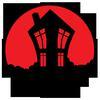Music of the 1980's is often associated with; hair metal, shopping mall pop, and synthesizers; but let us not forget there was a massive dark undercurrent to the Decade of Excess. Rising largely out of Britain's independent scene, goth and industrial music truly made a statement during this era that things were not great as they filled listener's ears with songs of gloom, depression, and all manner of dark influences. Often confined to a devoted cult-like fanbase, these artists often lingered in the shadows of mainstream music. If you want to venture into the darkness of their music here are the best goth and industrial bands of the 1980's.
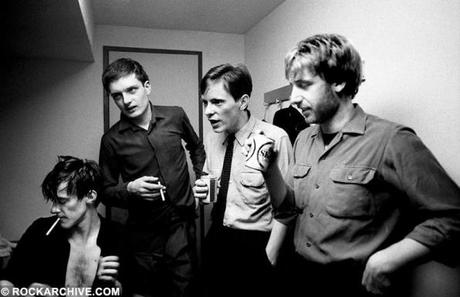
Joy Division: The tragic tale of a band from Manchester, England who had a unique gloomy sound but things fell apart on the precipice of fame. Though Joy Division left a musical legacy which continues to inspire artists to this day, they will forever be tied to the tragic suicide of frontman Ian Curtis after a long battle with epilepsy and depression. Beginning life as a straight-up punk band, their sound began to shift into a more angst-ridden and melancholic direction. Guitarist Bernard Sumner and bassist Peter Hook slowed things down and cranked up the bass to an almost distorted level, to compliment this Curtis took his vocal style to a more baritone direction. By the time they performed their song "Shadowplay" on television and released their album Unknown Pleasures, the atmospheric sound they created was set in stone. Songs like "Love Will Tears Us Apart", "Isolation", and "Transmission" were met with critical success and the band built a solid fanbase across Europe. Once 1980's hit the band looked poised to hit it big, but after Curtis' suicide in the spring plans fell apart. In the summer of 1980 their final album Closer was released to critical praise, Smash Hits summed it up best calling it an "exercise in dark controlled passion". Afterwards the remaining members of Joy Division went on to form new wave band New Order continuing a successful music career.
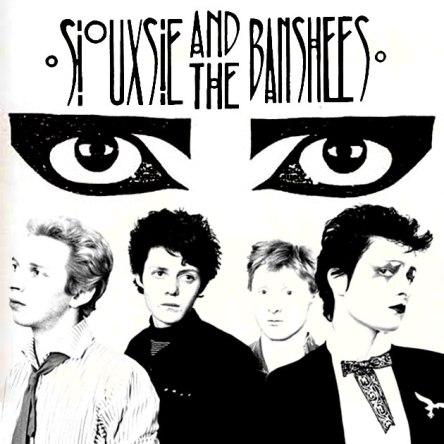
Siouxsie and the Banshees: Another band which began as a punk act in the late 70's yet evolved into darker territory as the 80's approached was London-based Siouxsie and the Banshees. For all intents and purpose, this was supposed to be a one off act. Singer Siouxsie Sioux and guitarist Steven Severin threw something together to serve as a fill-in at the storied 100 Club Punk Special in 1976. Together they shared the stage with the likes of; the Sex Pistols, the Clash, and the Damned. After this festival they recruited John McKay and Kenny Morris to their group. Siouxsie and the Banshees as they were dubbed, popped up on the radar of famed BBC DJ John Peel who gave them airtime and let them perform for one his famed "Peel sessions". Despite selling out shows and gracing magazine covers, the band remained unsigned to a record label until 1978 with the release of the Scream which left many critics confused as they had never heard anything like it before. In 1980, drummer Budgie joined the band and became one of the key players in their line-up going forward. Shortly thereafter the band released their most popular album Kaleidoscope, which parted with their punk roots as their sound became gloomier and experimental. Their single "Happy House" even managed to breakthrough into the Top 20 UK Charts. Throughout the 80's they maintained a strong fanbase in England with songs like "Hong Kong Garden" and a cover of "Dear Prudence". In 1986, Siouxsie and the Banshees hit the US music scene with their album Tinderbox and the critically acclaimed single "Cities in Dust". The band continued strong for the next several years, dabbling in a number of different stlyes along the way. In the late 90's Siouxsie and the Banshees finally called it quits after a long storied career.
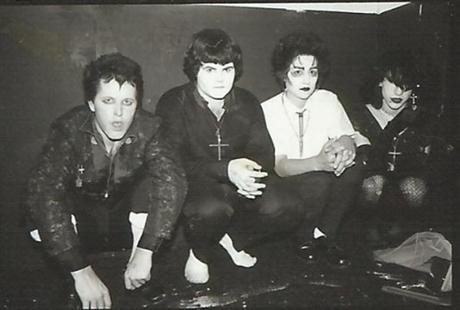
Christian Death: America's own pioneers of goth rock, strangely came from the notoriously bright and sunny Los Angeles. Choosing the provocative name, Christian Death, as a form of rebeliion against his religious upbringing, Rozz Williams put his ensemble together with members of previous bands he had played with. Right out of the gate in 1982, Christian Death debuted with one of the genre's greatest albums, Only Theatre of Pain. Music critics hailed it as a masterpiece while it caused controversy among faith based groups. Despite this success so early on the band inevitably broke up and Rozz Williams left to work on his own projects. Shortly before Williams' departure he collaborated heavily with guitarist Valor Kand on their sophomore release, Catastrophe Ballet with French record label L'Invitation au Suicide. It too was greeted with critical acclaim and took the band's sound into a more polished and restrained territory. Throughout the 80's Christian Death found success under Valor Kand's leadership, on the independent scene with songs like "Sick of Love" and "Church of No Return". However the band had a revolving door of membership and numerous line-up changes. This left things open for Rozz Williams and his wife Eva O. of the band Super Heroines to unite some of the original members of the band and dub themselves the "original Christian Death". This version of the band did away with subtlety titling their album Iron Mask a reference to the Alexander Dumas book about a pretender on the throne. After a court battle Kand retained the rights to the band's name and has pressed forward ever since. Today the band is still around and known for their close working relationship with popular black metal band Cradle of Filth.
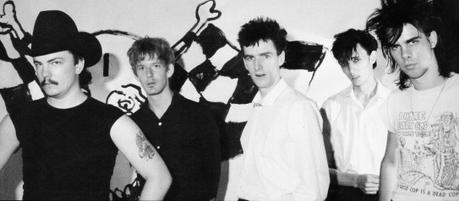
The Birthday Party: Hailing from Melbourne, Australia, the Birthday Party had a unique and complicated sound which blended numerous styles all somehow brought together by famed frontman Nick Cave. Beginning in Australia as The Boys Next Door, they decided to make a move to London in 1980 to try their hand in that popular music scene. This proved to be a successful move as the band became a favorite of John Peel who featured them in his rotation. While the famed DJ may have liked them mainstream critics were not too crazy about the band, or more likely did not understand them. The Birthday Party did however find success on the goth scene with their anthem about vampires and sex entitled, "Release the Bats" in 1981. In the spring of 1982, they released the controversial album Junkyard, which tackled violent and startling themes with their trademark infusion of jazzy funk and Caves' deep vocals. Sadly the band was hit with line-up changes and falling outs, and called it quits in 1984. The members went on their own musical journeys most notably was the formation of the band Nick Cave and the Bad Seeds, with Cave and Mick Harvey. Despite a brief run, the Birthday Party left a major legacy in the goth genre.
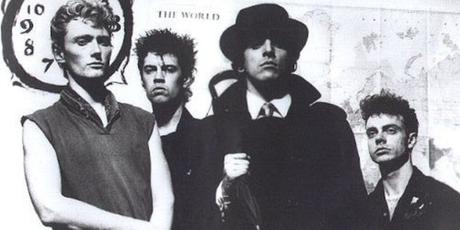
Killing Joke: When drummer Notting Hill-based rummer Paul Ferguson realized his friend Jaz Coleman was a talented keyboardist, he decided the next natural step was of course to form a band. After bringing on Geordie Walker on guitar and Youth on bass, they chose the name, Killing Joke as a play on the idea of finding humor in the futility of it all. With their 1980 self-titled debut album, Killing Joke proved they were harder an heavier than the other early goth bands which earned them the all-important favor of John Peel who made sure they had an outlet. Their dark and powerful sound and stage performances earned them fandom among fans of heavy metal and goth in their early years. 1985 marked a shift for the Killing Joke with the single "Love Like Blood" which had a far greater pop sound than any of their previous works, yet it proved to be the band's biggest hit and because of the bleak subject matter it did not alienate their core fans. This was the direction they decided to continue in but naturally people soured on the more mainstream pop sound the group adopted. Luckily in the early 90's Killing Joke was reenergized by the reformation of the original line-up and found success through that decade and into the 2000's.
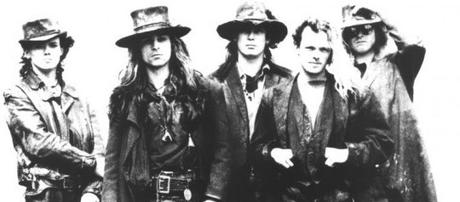
Fields of Nephilim: This band may have hailed from Southern England, but they maintained a style dubbed "dust and death" which owed much of its influence to the American West. Their hard hitting sound carried with it a heavy sense of foreboding as lead singer, Carl McCoy growled lyrics about paganism and the occult with his iconic raspy voice. In 1986, noted goth rock label Beggar's Banquet signed the band and released the single "Preacher Man" which shot to the 2nd spot on the UK Indie charts. They rode this momentum into the following year with their debut album, Dawnrazor which gave the band their first single to appear on the mainstream charts. 1989 saw Carl McCoy leave the band, in response remaining members; Tony Pettit, Peter Yates, Paul Wright and Nod Wright formed a new band called Nefilim. The years which followed would see Fields of Nephilim sporadically reunited to tour and record new material.
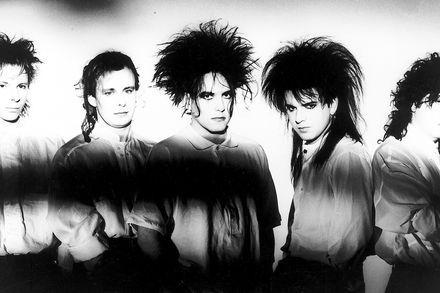
The Cure: The soundtrack for every love struck goth in the 80's featured this melancholic band. Led by iconic mascara-wearing frontman Robert Smith, the Cure formed in the wake of the post-punk movement of the late 1970's. The band's first single was released in 1979 entitled "Boys Don't Cry" which led to a tour with Siouxsie and the Banshees where the established themselves among the same audience. With the release of the album Pornography in 1984, the Cure added a smoother guitar style and synthesizer to their music which earned them a fanbase in pop music as well as in the goth crowd. After line-up shifts and some stylistic changes, they released albums; Kiss Me, Kiss Me, Kiss Me and the Head on the Door which firmly established them as one of the top music acts in Britain and even found its way to the United States. Singles like "Just Like Heaven","Inbetween Days" and "A Night Like This" hit the charts in the UK and US alike. This led to the Cure becoming the most mainstream goth band of the 1980's. Even through the 1990's and 2000's the Cure has remained one of the most popular bands in the world and Robert Smith has remained at the helm all along in the face of numerous line-up shifts, becoming synonymous with the band and the goth lifestyle as a whole.
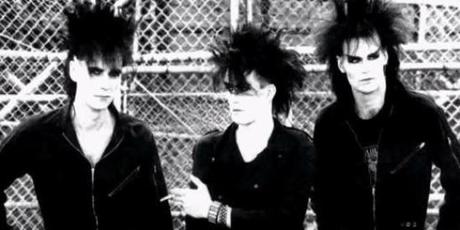
Skinny Puppy: The drummer for Images in Vogue, cEvin Key, decided he needed a side project to express his more artistic side and in the process completely changed the game in industrial music. Enlisting help from Nivek Ogre, and his Images in Vogue producer the group now known as Skinny Puppy recorded and EP in 1983. The band really got noticed when they hit the stage and were able to work crowds into a frenzy with a heavy EBM sound, but also with violent horror elements which became a hallmark of the band. In 1985, Skinny Puppy released their first studio album Bites, which shocked music critics with it's dark ferocity. The album's single "Assimilate" became a hit among underground clubs and raves. In 1986, Dwayne Goettel joined the band as a keyboardist and being a classically trained pianist, he brought an entire new dimension to the act. In 1988 the band released their album, VIVUsectVI which was a success thanks in large part to the single "Testure" the band's first and only appearance on the Dance Charts. Ogre, was especially proud of this particular song as he was given an outlet to decry abuse against animals, a message he made sure to convey in provocative fashion After a period of turmoil where it looked as if Skinny Puppy's days were numbered, the album released Too Dark Park which is lauded as a masterpiece of the genre and a return to the band's roots. To this day Skinny Puppy is still going strong, recording albums and touring with acts they paved the way for like; Nine Inch Nails. VNV Nation, and Ministry.
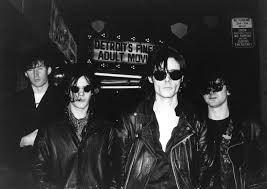
Sister of Mercy: A band formed in Leeds, England simply to hear themselves on the radio eventually evolved into so much more. Sisters of Mercy had a few singles pop up on the British independent charts, but before long they received the attention of Psychedelic Furs guitarist John Ashton who produced their first professionally recorded work. The sounds of Doktor Avalanche on drums and Craig Adams and Gary Marx on guitar and bass was a hit on the indie scene, added to that was Andrew Eldritch's baritone vocals and their music was something truly worth a listen. After their album First and Last and Always, members of the band began to drop out and formed their own band, the Mission. After the split, Andrew Eldritch release the most popular Sisters of Mercy album, Floodland, in the fall of 1987. From that release, the singles "This Corrosion" "Dominion" and "Lucretia, My Reflection" became hits on the UK charts. By now the band consisted on Eldritch and former Gun Club member Patricia Morrison. Despite the fact that Andrew Eldritch shunned the label "goth" the Sister of Mercy style was so undeniably dreary, and operatic that rejecting that classification is a losing battle.
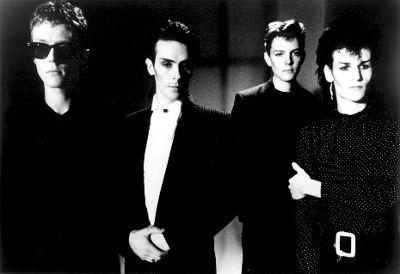
Bauhaus: In Northampton friends; David Ash, David J. Haskins, and Kevin Haskins had been trying for some time to put together a band. They seemed to be lacking one crucial element to truly get over and found it in an unlikely place. They felt former classmate and print shop employee Peter Murphy had a unique look which would give them a nice edge in their music despite him having no musical experience. Strangely enough when Murphy entered the picture and they adopted the name Bauhaus, it was the beginning of something big. In a short amount of time the band went to a studio to record an ode to horror movie icon Bela Lugosi entitled "Bela Lugosi's Dead". As an attempt at a single it flew under the radar for a while until DJ John Peel began to feature the song in rotation. Despite not hitting the charts this song would become the defining work of Bauhuas and is now heralded as one of the first anthems of the goth genre. They signed with the small label 4AD to release their album In the Flat Field, in the fall of 1980 which sold surprisingly well as listeners dug their more decadent style of goth rock. As their career progressed Bauhaus continued to expand their musical abilities though only a cover of a David Bowie song would make an impact on mainstream audiences. Their profile received a major boost after the cult classic film the Hunger utilized "Bela Lugosi's Dead" giving the song a new notoriety. In 1983 their song "She's in Parties" proved to be a massive global hit for the band, but shortly after this success they called it quits. Peter Murphy used his cult celebrity status to embark on a solo career, while the others formed the band Love and Rockets. Over the years that followed, Bauhaus have reunited from time to time for the occasional tour or recording but never anything serious.
